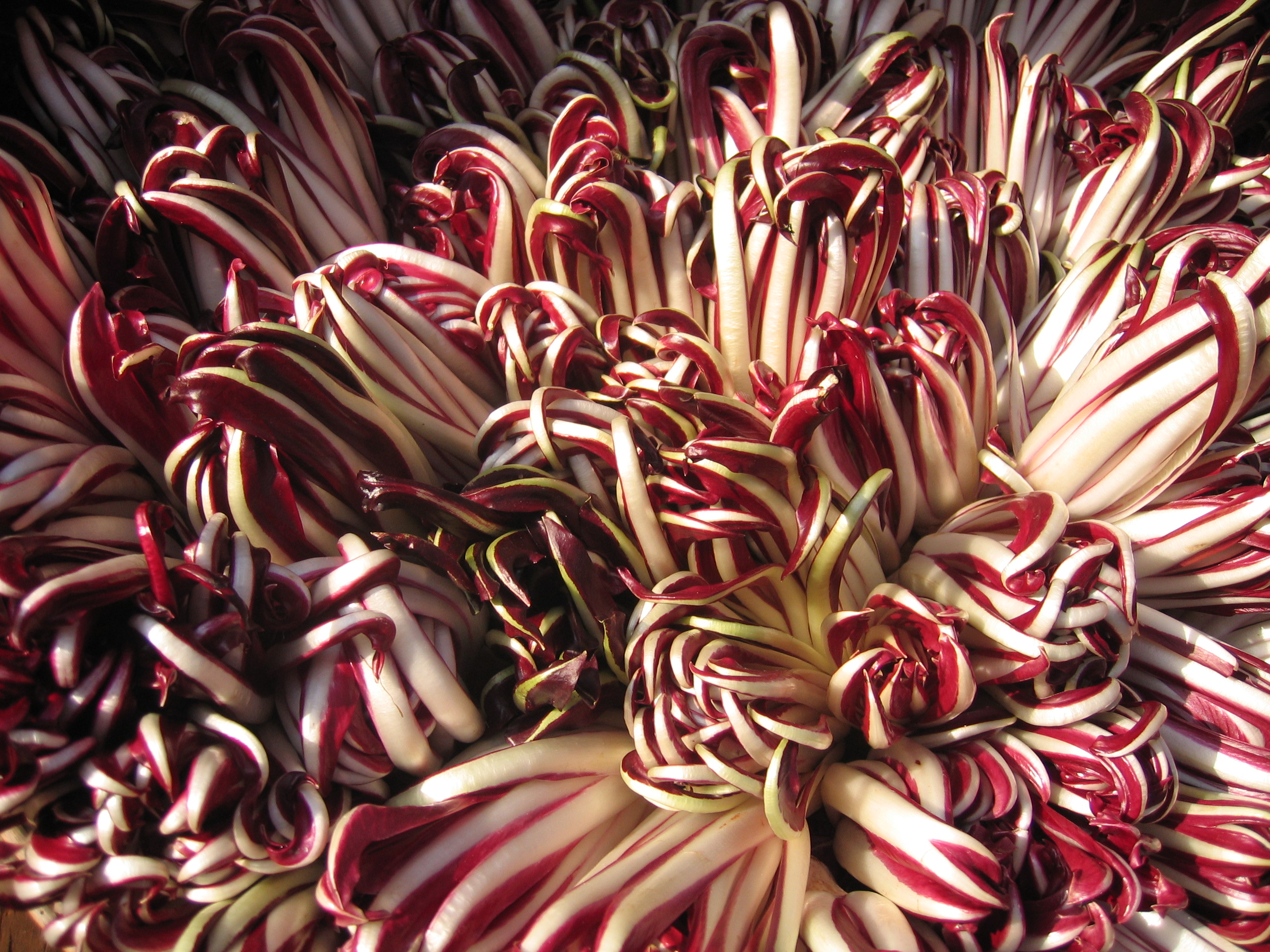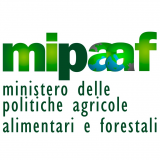
The species known as Cichorium Intybus has been around since the dawn of time as wild chicory, but it took continuous selection and technical improvements to make the prized and famous Radicchio Rosso di Treviso IGP. Its presence in the Veneto area can be traced to the 16th century as demonstrated by iconographic studies: in particular, in a painting by Leandro Da Ponte titled “The Wedding at Cana” (1579-82) there are baskets of fruit and vegetables including red radicchio.
However, its origins are lost in the past, consisting of ancient tales and legends that blend with reality, anecdotes and traditions. One of the traditions tells of birds that supposedly dropped seeds of this special chicory on the bell tower of the village of Dosson di Casier, at the gates of Treviso, which were then found by friars who lovingly cared for and cultivated them.
Others believe that the bleaching technique and, thus, the possibility of transforming a simple, bitter chicory into tasty radicchio, is due to a precise historical event: the arrival of Francis Van De Borre, a nurseryman who came from Belgium in 1870 to create an English garden at Villa Palazzi in Treviso, who is supposed to have talked about the bleaching of Belgian chicory.
While many others believe that the special “forcing” technique originated from the farmers' need to preserve the chicory harvested from the fields from the winter frost. When transferred to the warmth of the stables, rather than rotting completely, the plant preserved heats with a good, crisp taste.
Since there was abundant spring water available in the Treviso area, the farmers then introduced this essential element in the production process.
However, the only true historical comes from the first radicchio show, which took place under the loggia of the Palazzo dei Trecento in Treviso on 20 December 1900, organized by Giuseppe Benzi, the head of the Treviso Agrarian Association.
So, if radicchio could have been cultivated like chicory since the Renaissance, it was only in the second half of the 19th that, along with vegetable growing, this very particular production process was established, resulting in a product that was so successful it became the vegetable that symbolizes the Treviso and Veneto area.
Production
Good agricultural practice requires a three-year crop rotation (i.e., a field grows radicchio for two years, followed by a cereal such as barley and wheat) to preserve the valuable crops from harmful insects and mould.
After fertilization with plenty of natural organic matter, the surface is ploughed, harrowed and milled. After 1st July, the seeds are planted, especially in the nursery, during a waning moon.
From July 20 until the middle of August, the seedlings are planted in the open field, but obtaining the seedlings requires time and knowledge: in fact, the seedlings are the offspring of plants grown two years before.
In this case as well, the selection process is meticulous and traditional: the best plants are placed in pots and carried to the field in late spring to create beautiful blue flowers, protected by anti-insect cloth, and then the precious selected seeds are collected.
The Radicchio Rosso di Treviso IGP will remain in the field for about four months. The fields appear as expanses of green and, as long as they remain in the soil, the plants are practically inedible because they are so bitter and fibrous.
Harvesting and bleaching only begins in November after the soil has “suffered” at least two frosts, as required by the Regulations. In fact, the precious chicory must be wrapped by frost at least twice in order to stop the plant's growth process. In the field, the plant's leaves are droopy and burned by the frost. It is spring water, and the farmers' expert hands that, after a few weeks, allow them to express all their crispness and unmistakable taste.
Radicchio Rosso di Treviso IGP is the only chicory that does not come to the table directly from the field; it needs to be left in the ground and soaked in water for several weeks. In fact, this precious winter vegetable, the child of the autumn mists of the Veneto countryside, is harvested still partly green.
Brought to the processor, it leaves the soil to be bathed in pure spring water. The plants are taken from the furrow and gathered in bunches of about 30 heads of radicchio with their root and root ball.
The bunches are put in concrete tanks with running water and a constant temperature of not less than 10-12 °C, which must never wet the leaves. They are then covered with a layer of 8-10 cm of straw, leaves or shredded corn stalks and a tarp so that they remain in the dark. They stay here for about 15 days.
This bleaching process allows the plant killed by the cold to “wake up”, “deceived” by the warmth of the water, and to flourish again even in heart of the winter. The darkness prevents photosynthesis and two weeks are sufficient to ensure that the new, reborn chicory heart is completely without green chlorophyll.
The ground water then allows the plant to completely purify itself, removing all traces of the pesticides used in the field. After removing the last leaves, nothing remains of the plant that grew for months in the field.
The red hearts with long white red-violet ribs are cleaned in water, also retaining a portion of the taproot, which is also edible. The product is marketable only from mid-November (the forcing process can start only after the first two autumn frosts) until mid-March and has had PGI recognition since 1996.
The area
The cultivation of Radicchio Rosso di Treviso IGP is only possible in the fields of 24 municipalities in the Veneto region.
Production is thus located in the central Veneto plain, which is characterized by warm summers and harsh winters that have a profound effect on the lifecycle of the plant. The soil is fertile and particularly rich in water: in fact, it is the area crossed by the so-called “line of springs” that separates the high and low plains. Here the pure groundwater that flows down from Dolomites and runs underground under a mattress of gravel, meets less permeable layers such as clays and spontaneously rises to the surface creating a various streams.
The most important is the Sile, whose wetland - the cradle of a unique ecosystem - is protected by the Regional Park. It is precisely the abundance of pure water that is a crucial element in the production process of Radicchio Rosso di Treviso IGP.
By Consorzio Tutela del Radicchio Rosso di Treviso e Variegato di Castelfranco



